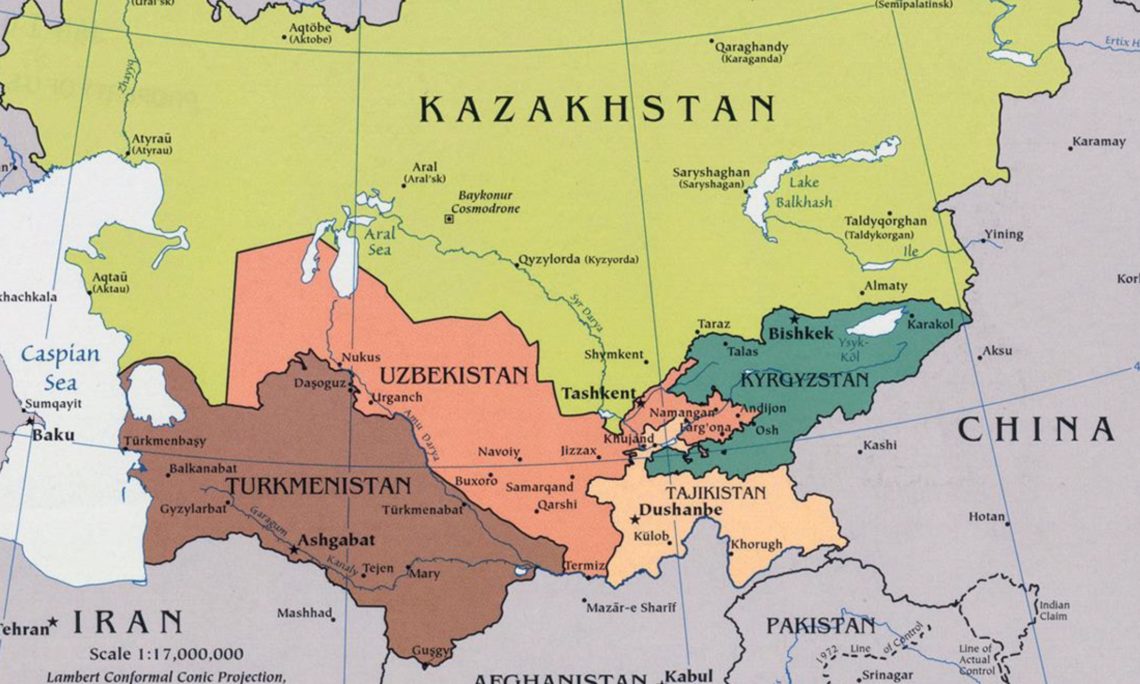AhlulBayt News Agency: With the finalization of the US troop withdrawal from Afghanistan by September 11, now evidence shows that Washington is embracing a strategy to establish military bases that would host its forces in Central Asia. A visit to Uzbekistan and Tajikistan of the US Special Representative to Afghanistan Zalmay Khalilzad in early May bear witness to this strategy.
Khalilzad met with Uzbekistan Foreign Minister Abdulaziz Kamliov during an official visit to Tashkent on May 2, 2021. The top politician traveled to Kabul on May 3, and a day later he met with Emomali Rahmon in the Tajik capital Dushanbe. These visits by Khalilzad have given rise to speculations about the White House plans to set up military bases in Central Asia after it pulls out forces from Afghanistan.
Recently, there have even been reports of a US decision to build a $240 million military facility in Central Asian states, including Turkmenistan. In recent days, some Afghan media outlets have also reported that Washington is building a military base in the Shaluzan and Terminal regions near the border with Afghanistan in Pakistani Kurram tribal district.
However, Washington's new policy raises two new issues: First, presence in Central Asia and making challenges for the region are the main goals behind pullout of Afghanistan. Second, through its new policy, the US probably aims at putting strains on its rivals, on top of them China.
US seeking foothold in Central Asia via C5+1 framework
The announcement of the US exit from Afghanistan raised questions for political observers about where the region will go after the US decision is fulfilled. Will the region face new security threats once the Taliban seize back the power? Many analysts assert that the decision seems to be a product of a secret agreement between Washington and the insurgent group to the benefit of the American geopolitical interests in the region even if it comes at the expense of the Afghanistan and regional people's interests. In the middle of this, President Joe Biden administration has unveiled the so-called initiative to address the concerns of regional states. The initiative is an effort to get foothold is the five states of Central Asia.
To this end, the US Secretary of State Antony Blinken hosted a virtual meeting of his counterparts from five Central Asian countries, including Kazakhstan, Kyrgyzstan, Tajikistan, Turkmenistan and Uzbekistan, on April— also dubbed C5 + 1 platform— highlighted the so-called American commitment to their independence, national sovereignty, and territorial integrity.
Although the US government appears to be seeking assurances for countries, the reality is that Washington pursues a toehold in these states as part of its broader policy of "pivot to the East", meant to curb China's growing power. Biden's security advisers now even propose the use of climate diplomacy and counter-coronavirus programs to increase influence in the region. Countering the Russian security and political influence in the regional states is also specifically significant for Washington.
Containing Russia politically and countering China economically in Central Asia
After the Cold War, the American administrations have constantly utilized the security and fight against terrorism as instruments to build geopolitical influence and realize their interests.
In past two decades, under the pretext of confronting terrorist groups and establishing stability in Afghanistan, the US built a large military presence in the already war-ravaged Afghanistan, without any mentionable achievements. But in the new conditions, the Biden government seems to seek to implement the old policy of Counterterrorism to expand its influence in Central Asia. But it should be noted that the real driving force behind the pullout from Afghanistan and establishing presence in Afghanistan neighbors is containing its powerful rivals, China and Russia.
In the new era, Central American strategy revolves around pivot to the East all to curb the thriving Chinese power. From the Americans' point of view, Beijing, with its huge investments in the Road and Belt Initiative— most of which is in Central Asian countries— intends to overtake the Americans to tailor the new world trade order. Therefore, it seems that the Americans see a need to establish military bases in the regional countries in order to put the skids under the Chinese influence boost.
In addition to China, Russia is another target of the US policy aimed at hampering Moscow's clout in neighboring states. Since long ago, Russia has been a powerful political, security, and military rival of the US, with all American administration united on curbing Moscow power. Actually, it seems that the White House has now redefined and prioritized its interests and relations in the Central Asian region and has adopted a strategy of challenging the rivals politically in the sensitive region of Central Asia as part of the broader policy to confront Russia.
/129

